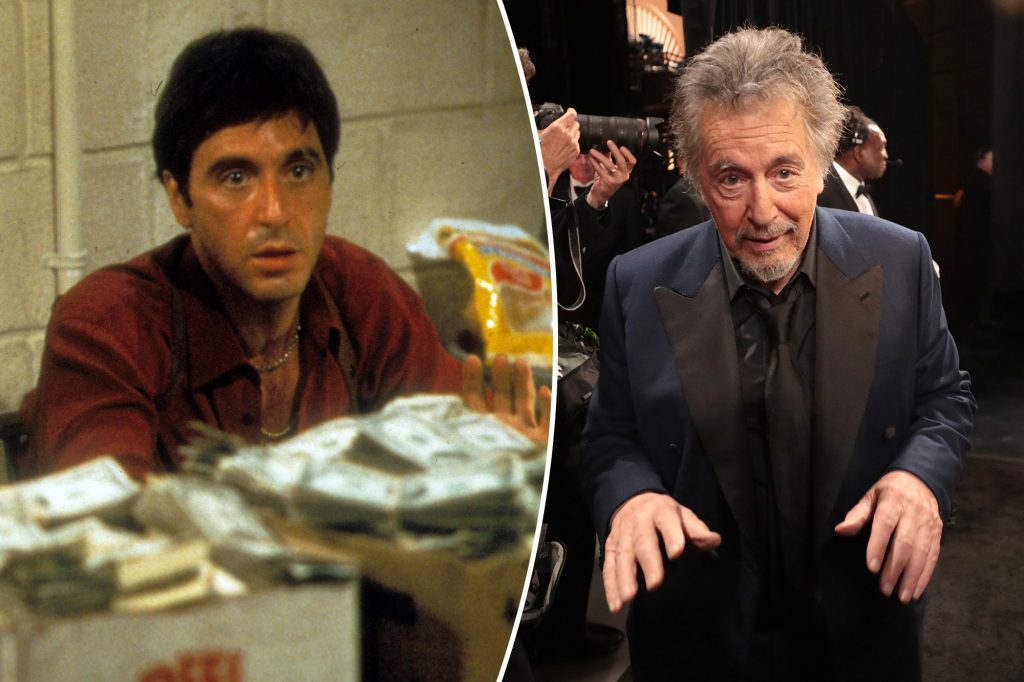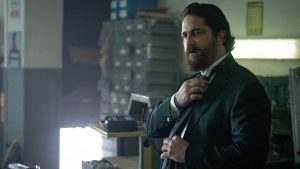
Al Pacino’s financial troubles have been laid bare, revealing a staggering lifestyle that contributed to his financial downfall. Once a Hollywood titan, Pacino found himself entangled in a web of expenses that escalated out of control, including an astonishing 16 cars, 23 cell phones, and a luxurious landscaping budget that ballooned to $400,000—all for a property he rarely visited.
In his memoir “Sonny Boy,” published in October 2024, Pacino reflects on a pivotal moment in the mid-1980s when he was broke despite the monumental success of “The Godfather.” Although the film became iconic, Pacino’s earnings were meager; he reportedly received just $35,000 for his role. He candidly admits that after the film’s release, he found himself financially strapped, heavily reliant on support from fellow actress Jill Clayburgh.
Despite working on acclaimed films such as “The Godfather II” and “Scarface,” Pacino’s financial mismanagement persisted. Through his memoir, he shares insights into his reckless spending habits, highlighting how, at one point, he possessed a mere ninety grand in his bank account while trying to maintain a lavish lifestyle. With mounting pressure from his living expenses, he grappled with the fallout of ill-fated financial decisions, often pointing fingers at his accountants and managers while also acknowledging his own responsibility for the situation.
The drama intensified when Diane Keaton, his then-girlfriend, confronted his lawyer during a meeting about his finances. With palpable frustration, Keaton emphasized Pacino’s ignorance regarding money management, urging that someone needed to take charge of his financial affairs. Despite her outburst, Pacino recognized her truthfulness, confessing that understanding how money worked was a language he struggled to grasp.
After years of scarce projects, a turnaround began when Keaton encouraged him to re-enter the film industry, leading to his role in the critically acclaimed “Sea of Love.” However, earning potential remained elusive, and when he was approached to reprise his iconic role as Michael Corleone in “The Godfather: Part III,” financial necessity was a driving force behind his decision.
Despite his continued success, Pacino’s extravagant habits persisted, including a lavish family trip to Europe that involved a private jet and a stay at a luxury hotel. It was during this time that he started to suspect his accountant was engaged in dubious practices. Ultimately, he discovered the accountant was running a Ponzi scheme, leading to more financial devastation.
As he reflected on his spending, Pacino revealed the shocking reality of his monthly costs. He detailed how his extravagant lifestyle, swell expenses, and lack of oversight contributed to the rapid depletion of his wealth. By the time he turned 70, he was spending upwards of half a million dollars each month—a staggering figure for anyone.
However, Pacino’s situation reached a tipping point, driving him to reassess and streamline his life. He eventually took steps to regain control of his finances, selling one of his homes and seeking new opportunities like commercials and seminars. Yet, he admitted that some of his later projects were driven by necessity rather than passion, leading him into less reputable films.
Now, older and wiser, Pacino acknowledges the importance of prudent financial planning and has resolved to seek guidance from those more knowledgeable about financial management. He holds on to the legacy of “Scarface,” his most lucrative role, which continues to provide residuals that support his lifestyle—if he chooses to live more modestly.
Al Pacino’s story serves as a cautionary tale about the pitfalls of financial mismanagement in the high-stakes world of Hollywood, highlighting the lessons one can learn from past mistakes in the pursuit of fiscal responsibility and the value of sound advice.





